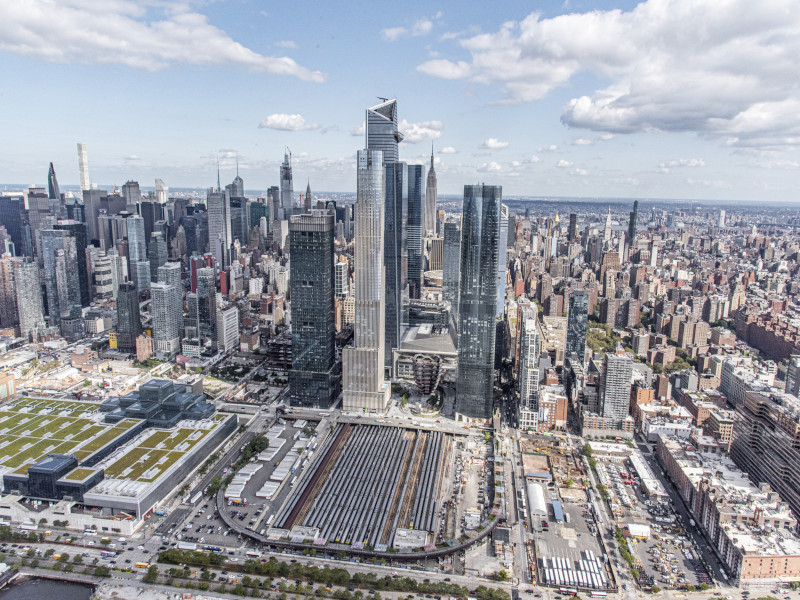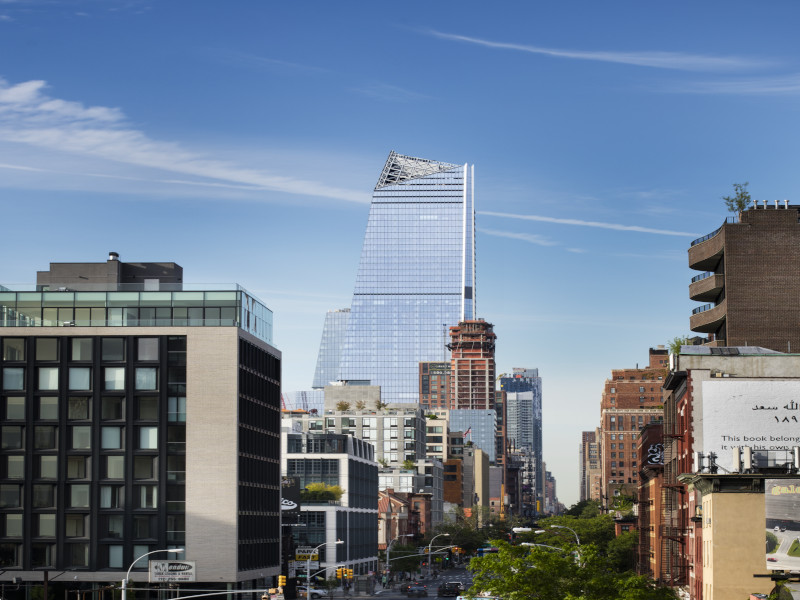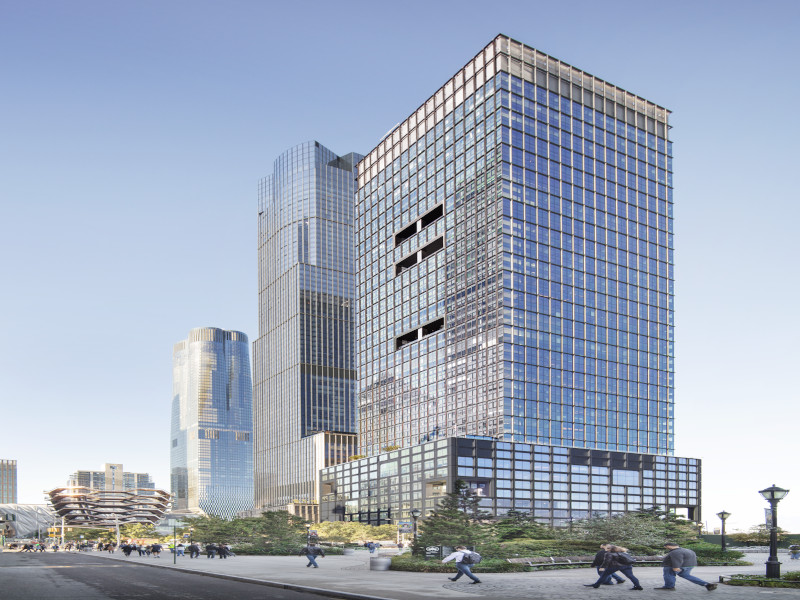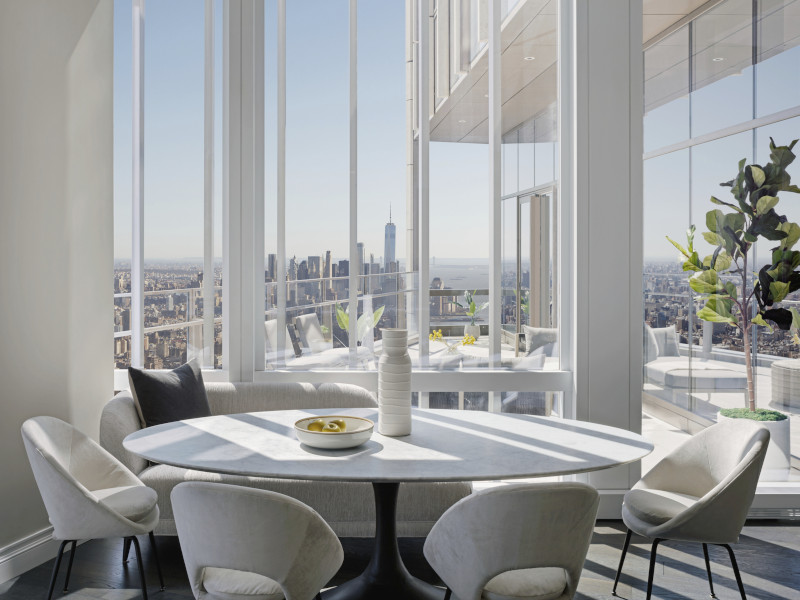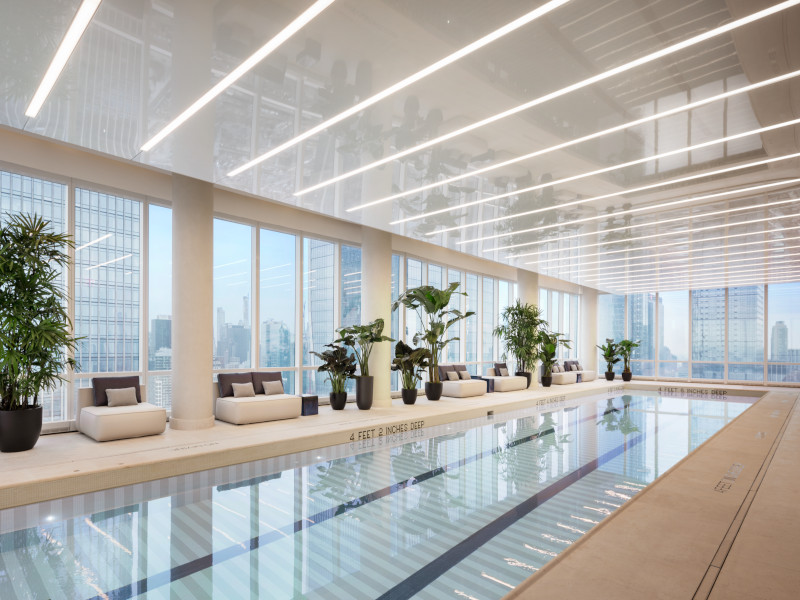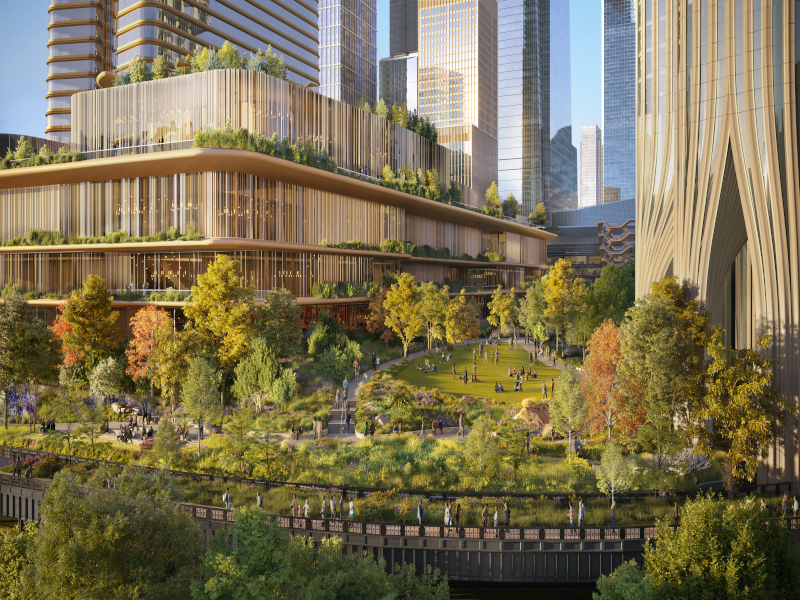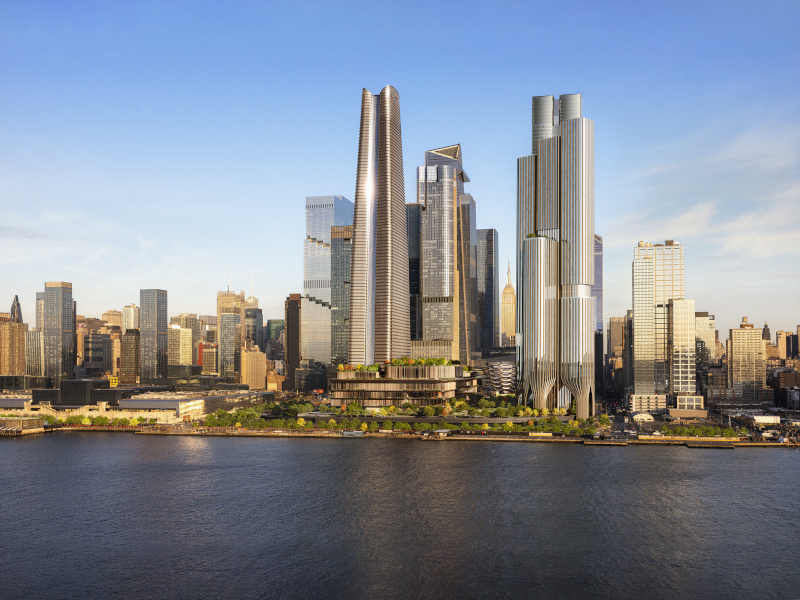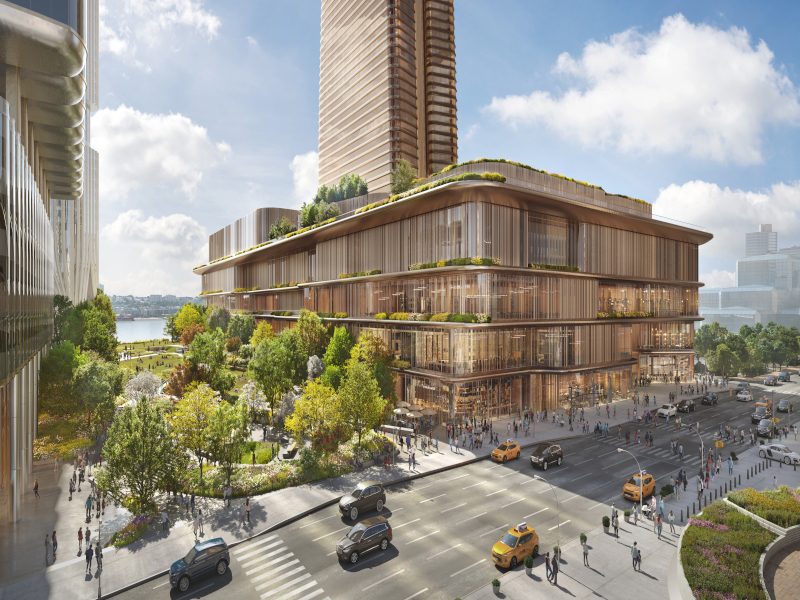Hudson Yards is a mixed-use neighbourhood being developed in Manhattan, New York City, US, jointly by Related Companies and Oxford Properties.
It is the largest development in the city since the Rockefeller Center and the biggest private real estate development in US history.
The development is the centrepiece of the $20bn Hudson Yards Redevelopment Project, a joint venture by the New York City Department of City Planning and Metropolitan Transportation Authority, aimed at transforming the far west side of Manhattan.
The project broke ground in December 2012 and the first phase was officially opened in March 2019. Phase one created approximately 23,000 construction jobs.
The project’s second phase is expected to create approximately 35,000 construction jobs and 5,000 permanent jobs.
More than 24 million people are expected to visit Hudson Yards annually and 40,000 people will work or live in the complex.
Master plan and design of the Hudson Yards
Hudson Yards is being built on a 28-acre site over a working rail yard on the west side of Manhattan on the waterfront of the Hudson River.
The waterfront site is divided into eastern and western portions by 11th Avenue.
Phase one included the development of the East Yard, including seven buildings, six acres of public open space and a seven-storey cultural space called The Shed.
The buildings within the development, including 10 Hudson Yards, 30 Hudson Yards, 50 Hudson Yards and 55 Hudson Yards are high-rise office buildings.
The 10 and 30 Hudson Yards buildings are connected by a mixed-use podium, 20 Hudson Yards.
The 20 Hudson Yards building is a seven-storey retail centre overlooking the public square and gardens. Public spaces are centred around a major piece of public art and provide direct connections to the High Line and the new Hudson Park and Boulevard.
The 15 Hudson Yards and 35 Hudson Yards buildings are two of the tallest residential towers in New York City’s Hudson Yards development.
The main entrance of the new No 7 Subway station is located between 50 Hudson Yards and 55 Hudson Yards, connecting people to the major subway nodes of Times Square, Bryant Park and Grand Central Terminal.
The Hudson Yards project’s phase two will involve the development of the West Yard.
In total, the project will provide 17 million square feet of commercial and residential space, in addition to 14 acres of public open space.
Vessel public square and gardens
Vessel is an interactive spiral staircase designed by Thomas Heatherwick and Heatherwick Studio.
It serves as the extraordinary centrepiece of public squares and gardens in Hudson Yards.
The landmark features 154 interconnecting flights of stairs, nearly 2,500 steps, and 80 landings, offering remarkable views of the city and river from various heights and angles.
10 and 30 Hudson Yards details
The 1,296ft high 30 Hudson Yards is the third tallest office building in New York City with more than 100 stories, surpassing the Empire State Building.
It boasts panoramic river-to-river views, outdoor terraces, a triple-height lobby, and direct No. 7 subway access.
The building is home to the Edge observation deck, the highest in the Western Hemisphere, and serves as the headquarters for Warner Media and its subsidiaries.
It features large floor plans, advanced communications systems, and top-notch amenities.
Located at the southern corner of the development and spanning the High Line, 10 Hudson Yards is also a Class-A office tower, housing COACH’s global headquarters along with L’Oreal USA and SAP.
The 52-storey 10 Hudson Yards stands 895ft tall. It provides 1.87 million square feet of commercial space for tenants and features a dramatic atrium for a modern office environment.
Designed by Kohn Pedersen Fox Associates (KPF), the two towers include floor-to-ceiling glass, daylight harvesting, and underfloor air and wire management.
They are designed to tilt in opposing directions, with one facing the city and the other the Hudson River, creating a dynamic skyline presence that enhances Hudson Yards’ visibility in New York City.
50 and 55 Hudson Yards details
50 Hudson Yards, spanning an entire city block, is New York City’s fourth largest commercial office tower.
Designed by Foster + Partners and achieving Leadership in Energy and Environmental Design (LEED) Gold certification, the 2.9 million square feet building stands over 1,000ft tall.
It offers direct access to the No. 7 Subway station and has multiple entrances on Hudson Park & Boulevard, 10th Avenue, and both 33rd and 34th Streets.
The tower is flooded with natural light and features exceptional amenity spaces, private sky lobbies, and stunning views of the Hudson River.
It can accommodate more than 500 people per floor due to its large floorplates. BlackRock and Meta are major tenants, leasing one million and 1.2 million square feet, respectively.
Designed by A. Eugene Kohn and KPF, 55 Hudson Yards is a 1.3 million square feet office building situated at the intersection of Hudson Yards, the High Line, and Hudson Park & Boulevard.
The 780ft-tall, LEED Gold-certified building features a unique facade inspired by the revitalised High Line district, Soho’s cast-iron buildings, and early modernism.
The matte metal and stepped window frames of the building provide a solid, modern exterior that retains a distinct New York character while expansive floor-to-ceiling windows maximise interior light.
The building’s entrance is conveniently located across from the No. 7 Subway station.
Residential and other facilities at Hudson Yards
The 70-storey 15 Hudson Yards houses 385 condominium and rental residences while 35 Hudson Yards contains luxury residences and a 175-room hotel with a ballroom and spa across 79 stories.
The Shed Arts Center, spanning 180,000ft², hosts art, design and performances.
The Shops and Restaurants at Hudson Yards located within 20 Hudson Yards, cover one million square feet, featuring more than 100 premier shops, including New York City’s first Neiman Marcus spanning 250,000ft².
It also houses cinemas, speciality restaurants, markets and bars.
The interior of the 20 Hudson Yards boasts an 85ft high central atrium featuring a 300ft-long, 90ft-high custom glass wall by James Carpenter, offering stunning views of a six-acre public space.
The building has triple-height circulation spaces with direct connections to the adjacent 30 and 10 Hudson Yards lobbies, and entrances on 10th Avenue and to the public spaces to the west, providing excellent accessibility.
In addition to its retail and hospitality offerings, 20 Hudson Yards features technical innovations such as an eastern facade with perforated steel panels for rail yard ventilation and a roof accommodating a co-generation plant that powers the entire development.
Construction schedule of phase I development
Site preparation on the East Yard platform began at the end of 2013. Two platforms were built over three-quarters of the active rail yard site to cover 30 tracks.
A total of 300 caissons were drilled deep into the bedrock between the railway tracks to support the platform and buildings.
The caissons ranged between 4ft and 5ft in diameter and between 20ft and 80ft in depth.
Caisson drilling began in March 2014 and approximately 25,000 tons of steel and 14,000 cubic yards of concrete were used.
The 10 Hudson Yards was the first building to start construction in December 2012 and it was completed in May 2016.
Construction of 15 Hudson Yards began in late 2014 and was completed in March 2019. Construction of 55 Hudson Yards commenced in January 2015 and was completed in March 2019.
Hudson Yards West development details
Wynn New York City, an innovative resort, will complete the Hudson Yards neighbourhood and contribute to the revitalisation of Manhattan’s West Side. Anchoring the undeveloped Western Railyard, it will feature affordable housing, a school, and more.
The development will also include a substantial community benefits programme, security measures, and a traffic mitigation plan.
Built on a platform above the railyard between West 30th and West 33rd Streets and 11th and 12th Avenues, Hudson Yards West will offer a 5.6-acre publicly accessible contiguous open space with access to the Javits Center and nearby parks.
It will also feature a gaming resort with luxurious accommodations, restaurants, bars, lounges, a spa, and a concierge team.
Additionally, the development will house a residential building with affordable housing, Class AA commercial office space, a 750-seat public school, a community facility, and a daycare centre.
Contractors involved with the Hudson Yards project
The master plan for the mixed-use project was created by KPF.
Related Companies and Oxford Properties Group signed Tishman Construction as the building partner for the project.
Tutor Perini is serving as the general contractor while Thornton Tomasetti is the structural engineer for the project.
Langan was chosen as the geotechnical and environmental engineer and Arup is the life-safety systems engineer for the platform.
Jaros Baum & Bolles is providing mechanical and electrical engineering services.
The 15 Hudson Yards and The Shed were designed by Diller Scofidio + Renfro and Rockwell Group, in collaboration with Ismael Leyva Architects.
The 35 Hudson Yards was designed by David Childs and Skidmore Owings & Merrill while The Shops and Restaurants at Hudson Yards was designed by Elkus Manfredi Architects.
Nelson Byrd Woltz Landscape Architects designed the public square in collaboration with Heatherwick Studio.
Related Companies collaborated with Wynn Resorts, a high-end hotels and casino developer, to develop Wynn New York City resort to complete the Hudson Yards neighbourhood in September 2022.

